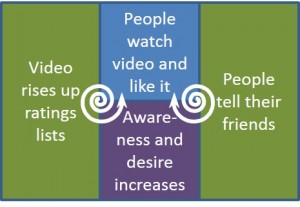I have just completed a Discussion Draft of comparative review of eight existing approaches that are similar to Adaptive Iteration. I have published the comparative review as a White Paper here. One of the benefits the review is that it has helped clarify and crystalize the essence of Adaptive Iteration in the form of a set of principles – still in draft at this stage. I listed the principles towards the end of the White Paper and repeat them here for you to review and comment.
Principles for Adaptive Iteration
- Adaptive Iteration applies to all non-random situations where behaviour and performance cannot be predicted with confidence in advance. In the main, this applies to situations that are partially structured and emergent. Because of dramatically increased connectivity generated by developments such as globalization and by technologies such as the internet, situations that require Adaptive Iteration are increasingly prevalent and of increasing significance.
- Adaptive Iteration involves the co-evolution of learning and action in an iterative four phase approach:
- Clear and unbiased observation of the situation, including contextual influences
- Interpretation of the observed data to improve understanding of the trajectory of and the influences on the situation
- Incorporation of the interpretation insights into a hypothesis for an improved design
- Conduct of one or more experiments to assess the impact of the proposed improved design.
- Adaptive Iteration is underpinned by a clear and shared understanding of the fundamental drivers for and constraints on the adaptive decisions. This provides coherence and alignment for all decisions and provides lower level scope for the adaptive process to explore novel and unconventional options. It also provides a clear driving force for adaptation and against the status quo.
- Adaptive Iteration may be a nested approach in which a lower level Adaptive Iteration cycle is used as the experimental phase for a proposal for a higher level design change. Because of its multi-level applicability, Adaptive Iteration should be a core capability throughout any organization.
- Rapid iterations of Adaptive Iteration are important during the early stages of an adaptive transition. These iterations promote critical early learning and integration across the four phases. They also help shake-out any lack of shared clarity about the fundamental drivers and constraints.
- Adaptive Iteration co-exists with analytical action. Where the impact of a design variable can be predicted efficiently and with confidence, Adaptive Iteration is not required and the design changes should be subject to ‘analytical action’.





Follow Us!